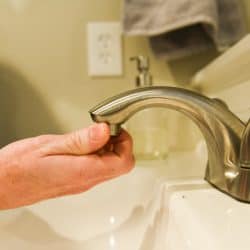Choosing between brass and stainless steel faucets for your kitchen can be overwhelming for any homeowner. You need to consider the style, material, price, and more.
According to statistics by Grandview research, in 2020, the faucet market was valued at around USD 3.2 billion. However, this is expected to grow by an average of 5% by 2028.

Source: Grand View Research
These statistics highlight the anticipated demand for faucets. But you may not have the facts to leverage when purchasing faucets for your home.
This article lightens your dilemma and helps you to make an informed decision.
JUMP TO: Table of Comparison | Brass Faucet | Stainless Steel Faucet | Brass and Stainless Steel Faucet Comparison | Bottomline |
- Brass faucets are considered relatively toxic because they contain lead.
- Stainless steel faucets are more potent than brass faucets
- Brass faucets are cheaper than stainless steel faucets
- Stainless steel faucets are considered corrosion resistant than brass faucets
Quick Overview (Table Of Comparison)
| PARAMETER | BRASS FAUCET | STAINLESS STEEL FAUCET |
| Material composition | Copper, Zinc | Chromium, carbon, iron, and manganese |
| Toxicity | Relatively toxic | Non-toxic |
| Durability | Relatively durable | Highly durable |
| Maintenance | High maintenance | Low maintenance |
| Environmental friendliness | Less environment-friendly | Highly environment-friendly |
| Strength | Strong | Stronger |
| Resistance to corrosion | Lower corrosion-resistance | High corrosion-resistance |
| Price | Relatively cheaper | Pricey |
Brass Faucet Explained
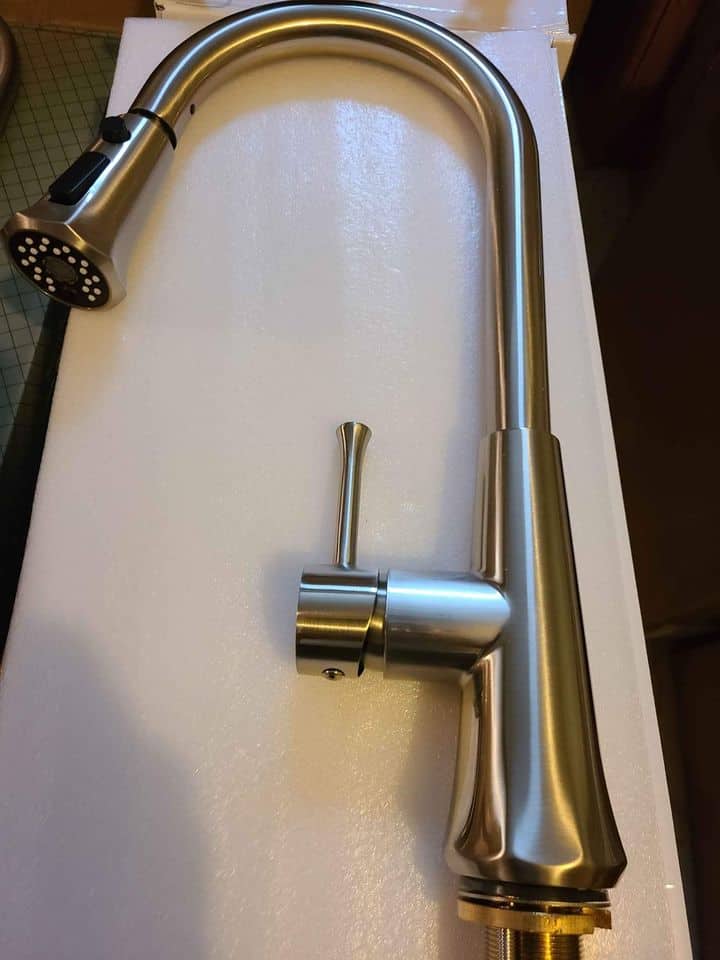
The brass faucets are primarily made of copper and zinc alloy, which could also include traces of other metals. Brass faucets have an array of colors. From shiny silver, grey, and warm brown, the appealing orange to deluxe gold.
Some lacquered brass faucets have an electrophoretic coating, giving them a fingerprint-free characteristic. Unlacquered brass tends to tarnish when exposed to oxygen over some time.
Pros
- Versatility: Brass faucets come in various colors and designs, giving customers multiple choices. With brass faucets, there is something for individual taste and preference.
- Authentic: Most brass faucets come with high-end designs and antique finishes. Some brass faucets come with finishes that add depth and dimension.
- Malleability: Brass is easy to bend and shape, creating diverse designs and shapes.
Value addition: faucets crafted from brass are pricey and add value to your home compared to other cheaper materials.
- Hardness: Solid brass is resistant to wear and does not scratch easily.
Cons
Lead Toxicity: There have been concerns that brass may have some lead which leaches into the water as a contaminant.
Expensive: the cost of the brass faucet may be prohibitive for a consumer with a limited budget.
The Stainless-Steel Faucet Explained

Stainless steel appears to be the most preferred faucet material in many kitchens. It is the go-to as it is immune to food’s acidic effects and is 100% solid and recyclable.
Stainless steel fixtures and faucets are made of iron-carbon and chromium alloy with some trace metal for improved qualities. Most good quality stainless steel faucet is made from 304 quality steel, but the premium qualities are made from 316 quality stainless steel.
The 316 quality has a molybdenum coat, which increases its resistance to pitting staining and corrosion.
Stainless steel contains 8% nickel and 18% chromium. The chromium helps resist corrosion, while the nickel gives steel the crystalline structure. It also has about 3% molybdenum, which allows it to resist acids.
Caution: You must be looking for counterfeits, which may cost less. Buying from a trusted supplier would be a good idea as they sell quality for a reasonable price.
The Pros
- Easy cleaning: stainless steel faucet does not have crevices where grime holds. They are easy to clean, retaining their shiny and fresh appearance.
- Reasonable price: stainless steel faucet gives you a combination of quality and function within your budget. For this reason, it makes a good choice for most customers.
- Less maintenance; stainless steel products have excellent anti-corrosion characteristics. They are rust-free and must only be kept dry using a soft cloth.
- Durability: stainless is generally hard and can withstand tear and wear for over ten years.
- Withstand pressure: stainless steel faucet can withstand high water pressure allowing you value for your money.
Cons
- Leaves marks: stainless steel faucets may leave fingerprints and show dirt, making them less manageable.
Also Read: How to Cap Off Sink Plumbing?
8 Key Differences Between Brass And Kitchen Faucets
Brass and stainless steel have eight key differences. Let’s look at each of them below to help you decide which faucet to go for in your kitchen.
Material Composition
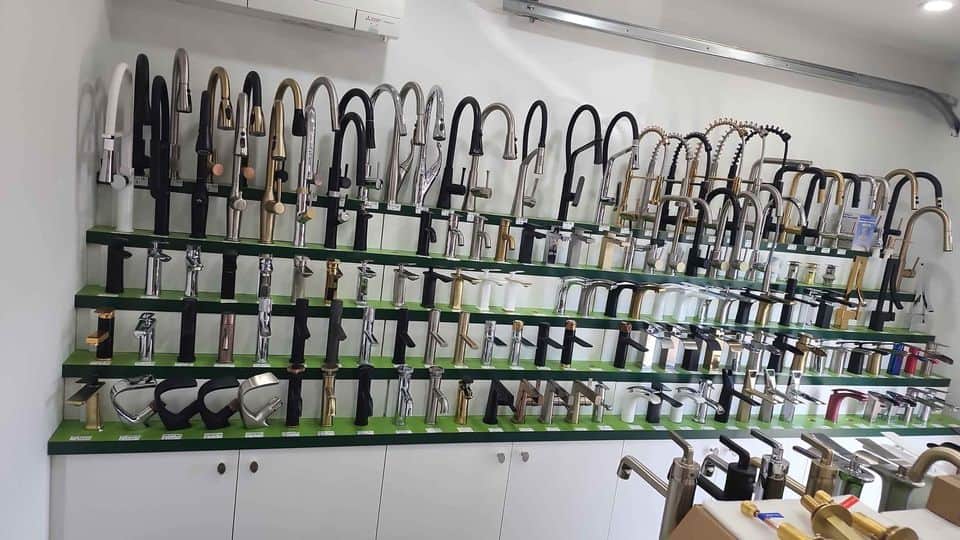
The material composition of any kitchen equipment is an essential consideration for any homeowner.
Mostly, material composition makes for an appealing outer look and plays a role in water safety from the faucet. Stainless steel and brass are alloys with different material compositions.
Brass is primarily made of copper and zinc. The amount of copper ranges between 50-63 percent, while that of zinc is between 50-37 percent. Additionally, you could find other additives that help to enhance malleability.
On the other hand, stainless steel material mainly contains chromium, carbon, iron, and manganese. Stainless steel material also contains nickel, which increases its strength by giving it a crystalline structure.
In addition, whereas stainless steel is 100% lead-free, brass has an average amount of 0.25% lead.
Verdict: Brass faucets are the winner here. They have a material composition that makes them slightly superior to stainless steel.
Safety (toxicity levels)
Brass is less processed compared to stainless. Moreover, it contains elements such as lead and nickel, which are relatively toxic.
In addition, if water rests overnight in the brass faucet, lead leaching from the brass interior is risky. This could potentially poison the drinking water.
In fact, EPA warns consumers that brass is the most significant contributor to lead poisoning in drinking water. According to EPA, 20% of lead exposure in human beings comes from faucets and plumbing.
Caution: Lead poisoning can result in high blood pressure and difficulties with memory retention.
On the other hand, stainless steel has zero lead. Consequently, it won’t release any harmful substances into the water. It’s considered safe material for foodstuffs and healthier for human beings.
Verdict: Stainless steel fixtures or faucets take the win here. They are safer for human beings than brass.
Durability
Every homeowner desires to buy kitchen equipment that lasts for decades. Otherwise, why waste money on something that will break down tomorrow?
There are mixed opinions on the durability of these two materials.
However, stainless steel faucets have natural eat-resistant properties that protect them from rusting. In addition, it does not fade, and the visual appearance of the stainless steel finish remains fresh. Stainless steel is also twice as tough as copper.
On the other hand, brass is more susceptible to rust than stainless steel, which might reduce its longevity.
Verdict: Stainless steel takes the lead here. It’s more durable than brass.
Maintenance
Stainless steel faucets are processed to be resilient to rough usage. They are low maintenance and don’t require fixing often.
In addition, the stainless steel material surface only needs polishing to show its stainless steel color. After that, it will maintain its silvery white luster for a long.
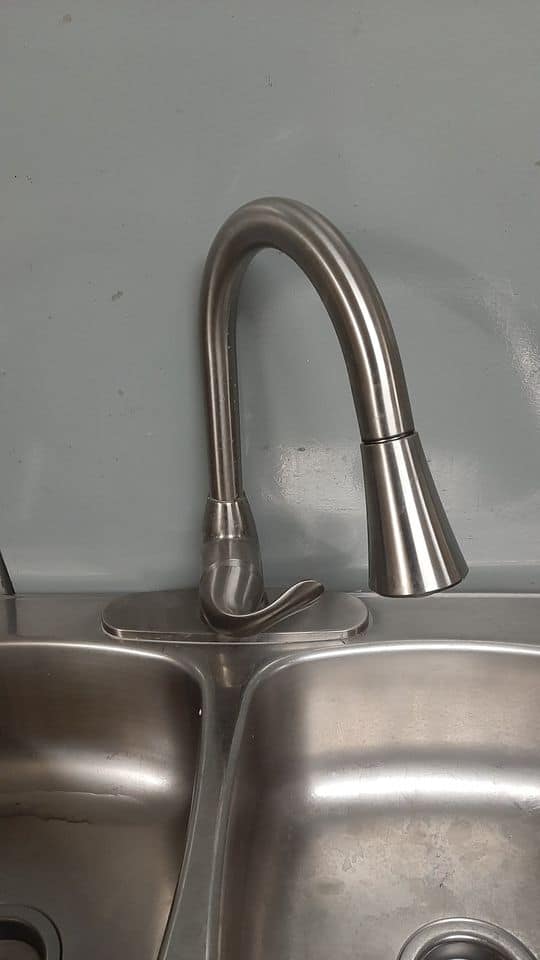
On the contrary, brass fixtures and faucets are harder to fix and repair. Moreover, most of their parts are not readily available in the market. Consequently, they require relatively high maintenance.
Verdict: Stainless steel faucets are the winner. They require less maintenance.
Environmental Friendliness
Stainless steel is generally considered environmentally friendly as it is 100% lead-free and rust-resistant. It is also resistant to corrosion and alkalis and is non-toxic.
Brass, though, contains lead which, when used for a more extended period, appears patina, and that color may become darker.
Verdict: Stainless steel faucets are the winner since they are more environment-friendly than brass.
Related Read: How to Remove Green Buildup on Faucet?
Strength
Brass has a 338-469MPa tensile strength, while stainless steel has a 621 MPa tensile strength. Unlike stainless-steel coated faucets, stainless steel faucets offer better strength value than brass faucets.
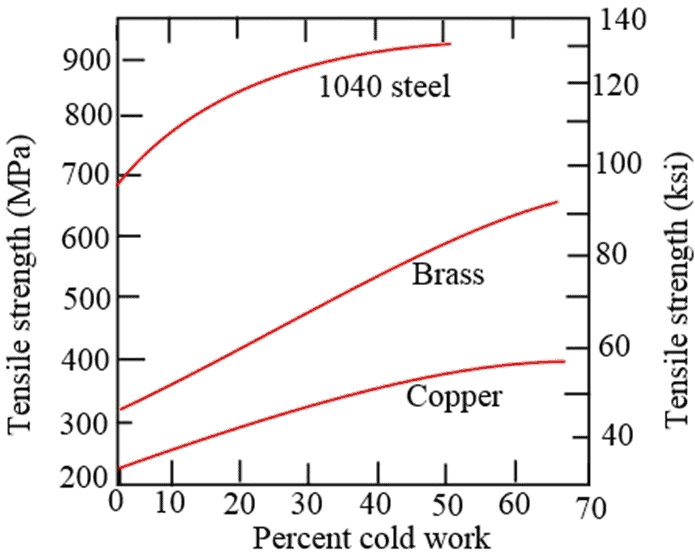
Source: Study.com
Verdict: Stainless steel faucets are the winner. They are stronger than brass.
Resistance to Corrosion
Corrosion resistance is a significant factor that enhances durability.
Brass has lower corrosion resistance than other copper alloys in the market. However, it still performs well under tougher circumstances.
On the other hand, stainless steel is highly resistant to corrosion. It can withstand harsh environments, thanks to the chromium merged with oxygen that generates a protective layer.
Verdict: Stainless steel faucets are the winner. They are more resistant to corrosion than brass.
Price
Price is one of the most significant deciding factors for anyone looking to buy or upgrade their faucet.
The raw materials used in the manufacturing of stainless steel are generally costly. Consequently, stainless steel faucets are more expensive than that brass.
Verdict: Brass faucets are the winner. Their price is relatively lower than that of stainless steel.
Wrapping it Up
The choice between stainless steel and brass faucets is down to price—individual taste and preferences.
If your preference is fashionable, brass fixtures and faucets would be a good fit. However, if you a looking for quality, then you would go for stainless steel.
However, having gone through the eight differences keenly, feel free to go for the one that best suits your needs.
![16 Types of Kitchen Faucets Explained [With Pros + Cons] 16 Types of Kitchen Faucets Explained [With Pros + Cons]](https://houseadorable.com/wp-content/uploads/2023/02/Roca_griferia_cocina_mencia_negro_DEF_900x505_acf_cropped-1@2x-250x250.jpg)
![Centerset Vs. Widespread Faucets [8 Differences Explained] Centerset Vs. Widespread Faucets [8 Differences Explained]](https://houseadorable.com/wp-content/uploads/2023/03/1_332369605_6500081363358836_8480186754416832788_n-250x250.jpg)
![Chrome Vs. Stainless Steel Faucets: [An In-Depth Analysis] Chrome Vs. Stainless Steel Faucets: [An In-Depth Analysis]](https://houseadorable.com/wp-content/uploads/2023/03/51gDGcVWBL._AC_UF10001000_QL80_-250x250.jpg)
![How to Clean a Brass Sink? [ 5 Natural + 5 Non-Natural Methods] How to Clean a Brass Sink? [ 5 Natural + 5 Non-Natural Methods]](https://houseadorable.com/wp-content/uploads/2021/12/how-to-clean-b-rass-sink.jpg)
![Pull Down Vs. Pull Out Faucet [9 Major Differences Explained] Pull Down Vs. Pull Out Faucet [9 Major Differences Explained]](https://houseadorable.com/wp-content/uploads/2023/04/image4-3-250x250.jpg)
![Kitchen Faucet Vs. Bar Faucet [What is The Difference] Kitchen Faucet Vs. Bar Faucet [What is The Difference]](https://houseadorable.com/wp-content/uploads/2023/01/GettyImages-1177440335-0210e69740fd4045ab6a88f1588e9f4f.jpg)
